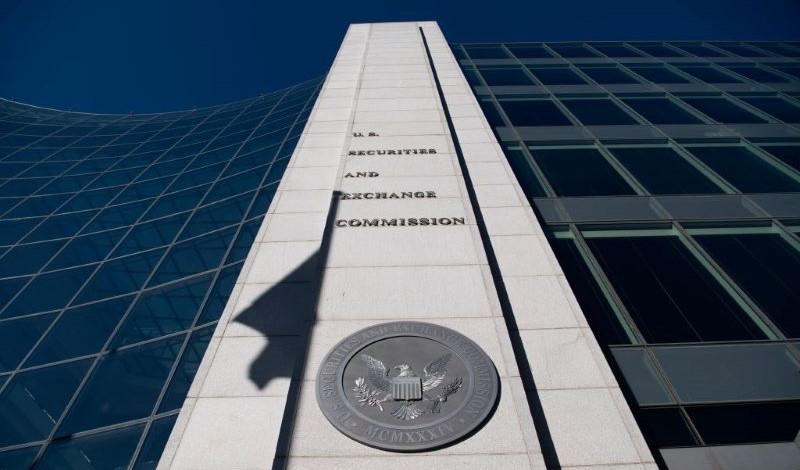
Scholar presents defenses that the SEC may use to legitimize restrictions on broker inducements.
Your stockbroker and Bernie Madoff share more in common than you think. At least, the U.S. Securities and Exchange Commission (SEC) is concerned they do.
The SEC is looking to tighten its regulation of broker inducements, a practice by which businesses pay brokers for fulfilling clients’ trade requests on their platforms. Broker inducements introduce conflicts of interest to the market. In the context of retail trading, this practice is called “payment for order flow”—a practice popularized by Madoff.
After SEC Chair Gary Gensler expressed that the Commission may ban broker inducements, the trading platform Robinhood, which relies on payment for order flow for its revenue stream, threatened that it would challenge such a ban in court. In a recent paper, J.W. Verret, a professor at the Antonin Scalia Law School at George Mason University, argues that the SEC could easily defend in court its possible changes to broker inducement rules.
Brokers have a duty of best execution, which obligates them to secure the best terms for orders that they execute for their clients. Verret explains that because the size of an inducement may vary by company, the practice creates a conflict of interest that may lead a broker to violate this duty. That is, broker inducements may influence brokers to choose the company that will yield them the highest kickback rather than the one that will most benefit a client. In the same way, Verret explains, broker inducements pose another conflict of interest because they can contribute to information exploitation, since factors including the speed and timing of trade execution influence value, too.
These conflicts of interest and the information asymmetry they produce are consequential. Verret explains that multiple firms, including Robinhood, have paid significant fines for allegedly violating their best execution duty in connection with payments-for-order flow. The profit that firms gain from inducements, however, dwarfs the penalties they incur. According to Verret, fines for illegal practices stemming from broker inducements are therefore not likely to deter problematic behavior.
To curb these conflicts of interest, current SEC rules require firms to disclose their broker inducement practices. Verret contends that the persistence of concern over inducements demonstrates that the insufficiency of the disclosure-based approach, which warrants the SEC to prohibit the practices or otherwise stringently restrict them.
Whether courts view the new approach as a modification of the SEC’s past policy or as a significant change will determine the level of judicial deference the new rule will receive. If courts interpret a prohibition or restriction of broker inducements as a significant change, the SEC would have to provide a more robust defense of its rulemaking to survive a legal challenge.
Even in the face of heightened judicial scrutiny, Verret asserts, the SEC has multiple ways to justify a significant change to its broker inducement regulation.
For one, Verret posits that the SEC can point to its direct statutory authority, given the conflicts of interest posed by broker inducements. The Securities Exchange Act of 1934 stipulates that the SEC has the authority to act “in the public interest,” and it requires the SEC to maintain “fair and orderly markets.” To defend its expected rulemaking pursuant to these public interest and fairness objectives, the SEC must present a qualitative analysis of the risks posed by broker inducements.
Furthermore, Verret argues, the SEC’s traditional mission to protect investors is compatible with stricter broker inducement regulations. Verret proposes that the SEC can put forth a substantial amount of evidence to demonstrate that tightening restrictions on broker inducements will better protect consumers. For example, the SEC could rely on any of numerous studies that show broker inducements harm consumers, such as by facilitating high-speed traders’ market advantage—which costs investors about $5 billion per year.
Verret explains that, by invoking its consumer protection mission, the SEC would also be bound to perform an economic analysis weighing the costs and benefits to the market. Although firms like Robinhood will likely experience negative impacts, Verret argues that the benefit of reducing conflicts of interest would far outweigh this cost.
Finally, the SEC’s role as a competition regulator justifies broker inducement regulation, Verret contends. Broker inducements contribute to consolidation in the brokerage industry. Since payment-for-order flow grew into a widespread practice over 40 years ago, the number of non-designated market makers, once over 40, has dwindled to only a few. Broker inducements also increase internalization, which keeps relevant information about trades from the public and helps to keep market power concentrated. Verret argues that an analysis of the anti-competitive nature of broker inducements would be relevant to the justification of any SEC action taken against them.
Verret concludes that, given the SEC’s express statutory power to restrict or ban broker inducements, the likelihood of a successful challenge to its expected rule is low. Still, Verret recommends that, in defending a broker inducement ban, the SEC should present both a qualitative analysis and a cost-benefit analysis of the ban, even though either one could suffice.



